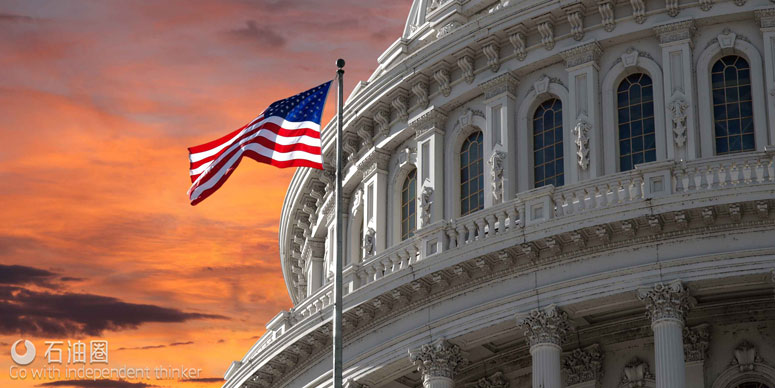When the Trump administration assumes office, the United States will have a historic opportunity to take control of its energy future. The nation has the natural resources, technology and ingenuity to confirm America’s legacy as a global energy superpower. But we need the right energy policy to encourage full development of our domestic resource base.
U.S. energy policy must be built on the recognition that the nation is blessed with abundant natural resources – oil, gas, coal and renewables. We’ve built the greatest economy on Earth, largely by letting free markets work and enabling the development of these resources to help ensure that our citizens and businesses have access to affordable, reliable energy.
The United States is now the global leader in total combined crude oil and other liquids production, overtaking both Saudi Arabia and Russia. In addition, we’re No. 1 in terms of natural gas production. And all this production provides a huge benefit to the economy.
In addition to delivering the energy required to run our country, the oil and gas industry supports millions of jobs and contributes taxes, rents, royalties and other fees to local, state and federal governments.
The president-elect has made clear he recognizes the importance of stimulating further investment in the energy sector, creating jobs at home, keeping energy costs down for consumers, and growing commerce by providing oil and liquefied natural gas for export.
So what policies are needed to advance the nation’s energy economy?
We need policies that help us take advantage of our domestic resources, centering on three fundamental objectives.
The first, and most important, is to provide affordable energy. Our economy won’t continue to grow and living standards won’t be maintained or advanced without fuels that households and businesses can fit in their budgets.
The second objective is to provide secure and reliable energy. This comes from having ready access to diverse sources that are scalable with demand.
And finally, we need balanced policies that simultaneously address the nation’s economic and environmental objectives.
By engaging all stakeholders through transparent processes built upon a fact-based cost-benefit analysis, we can develop such policies with well-considered regulations that enable markets to work effectively and advance all three objectives.
So how do we accomplish this?
First, let free markets work. They’re efficient and technologically neutral, enabling consumers to drive solutions instead of having the government mandate them – essentially picking winners and losers.
Free markets also support environmental objectives by keeping our economy strong. Typically, it’s the prosperous nations that can most afford to invest sufficient time and money to protect our environment.
We saw the efficiency of free markets with the recent rise in U.S. oil and gas production.
Global consumer demand for reliable and affordable energy in the past decade pushed up commodity prices to levels that encouraged investment in innovative ideas, such as combining hydraulic fracturing with horizontal drilling. This cracked the code to the economic production of oil and natural gas from shale and other low porosity rock and changed the U.S. energy story from scarcity to abundance.
The results were an increase in U.S. supply and, therefore, lower energy costs. This led to power producers switching from coal to natural gas, which in turn led to a reduction in U.S. energy-related carbon dioxide emissions to 1991 levels.
Free markets resulted in a win all around.
These sorts of market-based solutions keep fuels affordable for consumers and underscore that responsible energy production and environmental objectives can – and do – co-exist.
It’s incumbent upon us to share such advances – particularly with developing nations, which in many cases are preoccupied with enabling affordable energy.
Affordable energy is critical to providing the basics, such as transportation to get to work and to seek medical attention, as well as electricity to cook food and to light and heat homes.
Only as their economies prosper can developing nations more readily afford to address local environmental concerns, such as ambient pollution, and then global issues, such as greenhouse gas emissions.
One only needs to look at China to see this in action. As its economy has prospered, Beijing has started tackling environmental issues, addressing ambient air pollution by encouraging switching from coal to natural gas.
How do we enable technology transfer and fast adoption in developing countries?
First and foremost, the United States must remain a leader in the global economy.
Right now the United States represents about 16 percent of the world economy. We, as a nation, need to maintain this position by ensuring that our companies can compete globally where economies are growing, opportunities are enormous and competition is fierce.
The benefits are twofold: First, globally competitive American companies provide economic benefits for Americans. Second, they are the leading edge of American influence abroad.
Let’s look at Chevron as an example. Although just 30 percent of our business is in the United States, nearly 50 percent of our employees are based here. And of the $19.8 billion we’ve budgeted to spend on capital and exploratory expenditures next year, more than $7 billion of that is targeted for the United States.
In addition to the jobs, goods and services this money will provide this nation, we will benefit from transferring American technology, best practices and values abroad.
Our technology helps to grow the affordable and reliable energy supplies the world needs. And we advance best management practices while also committing to transparent and safe operations and social investment strategies that benefit the communities in which we operate.
Many of Chevron’s operations are in the developing world, where oftentimes host communities lack life’s most basic things – safe water, healthcare and opportunities to make a living. We work with communities to address these conditions, recognizing that a successful business can be the foundation of a prosperous community and a building block for political stability.
At a moment in time when American influence is critically important to promote global geopolitical stability, the best way to grow American influence is through such engagement.
How do we ensure America’s energy companies remain strong enough to engage and compete internationally?
We provide a fair playing field – one that does not disadvantage us with restrictive policies developed for short-term political gain. This requires tax, regulatory and access policies that are transparent and predictable, as well as supportive of our efforts to provide affordable and reliable energy for the country.
Ever-changing mandates and unpredictable regulator discretion are often borne out of noble causes, but can result in negative, unintended consequences, such as raising energy costs for consumers, agriculture, business and industry and pushing jobs elsewhere.
Take California, for example, where regulations to curb greenhouse gas emissions have pushed energy prices above the national average – hurting consumers and discouraging investment.
California’s electricity prices last year were nearly 50 percent higher than the national average. And this year, Californians are paying 25 percent more for a gallon of regular gasoline than the national average. Yet the latest data from the U.S. Energy Information Administration, or EIA, shows that from 2000 through 2013, California’s performance in terms of reducing energy-related carbon dioxide emissions was lower than the average of all states.
On a national level, the United States produces roughly 15 percent of the world’s carbon dioxide emissions. Yet in the name of reducing that figure, we have continued to tighten regulations while undermining the U.S. economy.
According to a report issued by the Congressional Budget Office, or CBO, on September 20, 2012, U.S. federal policies to promote electric vehicles, for example, were estimated to cost consumers, businesses and taxpayers $7.5 billion through 2019. The burden is felt by the poor, who must continue to rely on traditional fuels at the pump; the wealthy are subsidized to buy electric vehicles. And the CBO report went on to note that these policies would result in “little to no impact” on overall national gasoline consumption over the next several years.
The U.S. Renewables Fuels Standard, or RFS, requiring increasing amounts of advanced biofuels in the fuel supply, is another good example of the kind of regulation that doesn’t work. Mandated volumes require blending more advanced biofuels into the fuel system than we have the technology to produce or than most U.S. vehicles can use. So the main beneficiaries are those who can afford to invest in biofuels.
Doesn’t the fossil fuel industry also get subsidies?
We receive some benefits, but it’s nowhere near what the country is spending to subsidize renewables.
Renewables received total subsidies of $15 billion in 2013 (according to the EIA’s latest published data), or more than 50 percent of total U.S. federal subsidies and support to energy. Oil and natural gas combined received about $2.3 billion, or 8 percent of the total. The difference is even more dramatic when we look at the subsidies on a “per unit of energy delivered” basis.
And yet although the use of renewables will continue to increase, oil and natural gas are forecast to continue to account for more than 50 percent of global energy demand by 2040. Demand for these fuels will remain strong in the United States as well.
Where are those resources going to come from?
We could enable our domestic resources. We have the technology and the skills to develop sufficient supplies of oil and natural gas to run America’s factories, light our schools, power our businesses, support our travel, and run our computers and smartphones.
But this means we have to stop passing inefficient and impractical federal and state regulations, such as the RFS and those that limit or ban hydraulic fracturing or access to acreage where significant resources exist.
Today almost 90 percent of offshore acreage is off-limits or subject to access restrictions.
And our nation is facing a new generation of mandates, quotas and infrastructure constraints to further limit development. In addition, uncertainty around permitting new pipelines and other infrastructure projects discourages investment.
These types of constraints on American energy companies undermine our competitiveness – at home and abroad.
The nation needs transparent and predictable regulatory processes to support safe, responsible development of domestic resources and the infrastructure to bring them to market.
The president-elect indicates he understands this. As his administration moves to reform many of the current mandates and regulatory processes, it’s important that new regulations are based on rigorous cost-benefit analysis, sound science, pragmatic pathways for implementation and their ability to achieve their desired outcomes.
New regulations should not be passed until agencies have fully and objectively assessed the costs and benefits and reported their findings to the public. The entire process must be transparent and inclusive of all stakeholders. And we must not overreach in trying to get this right. There are some sound regulations in place, and we don’t need to scrap everything.
We must ask a series of questions before acting.
How much are the proposed policies going to cost consumers?
What will the actual environmental benefits be?
Could there be any unintended consequences?
If the Trump administration takes the time to not only ask, but also answer these questions before acting, it will go a long way toward building a legacy as the administration that removed barriers to domestic energy development and balanced economic, security and environmental objectives to fully enable the energy economy.
This is of critical importance. Our energy security, economic progress and long-term prosperity depend upon the United States getting this right for the citizens of this nation.


 石油圈
石油圈
